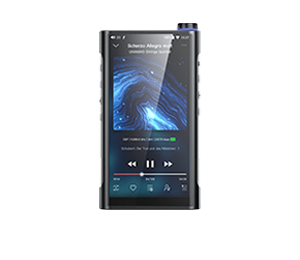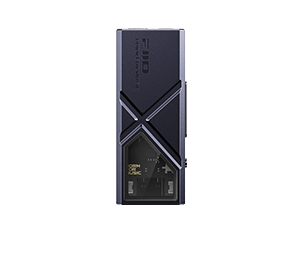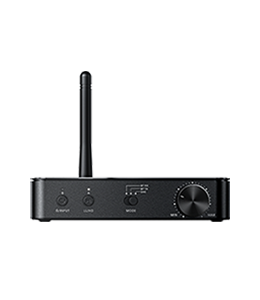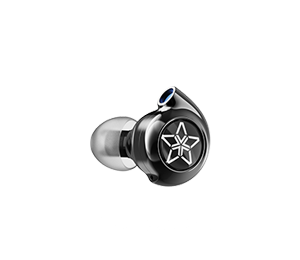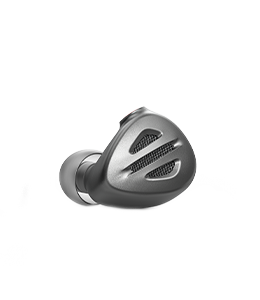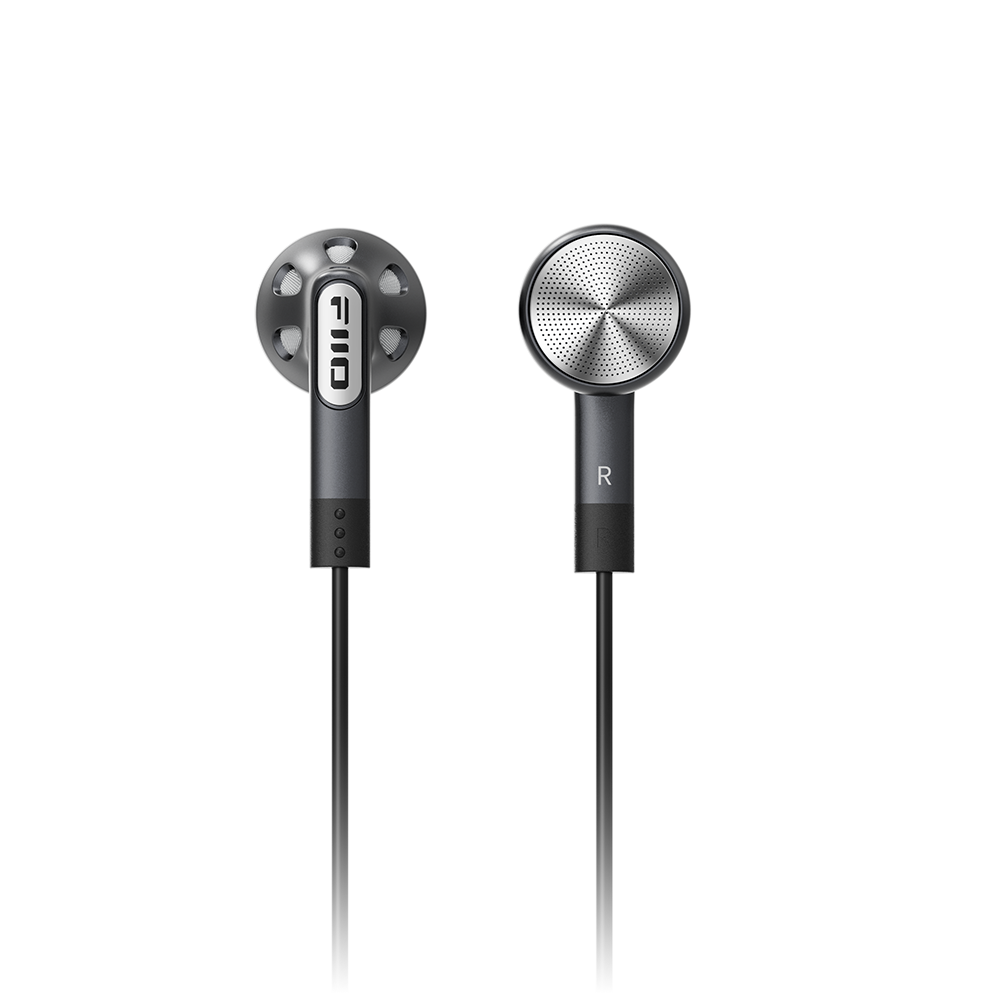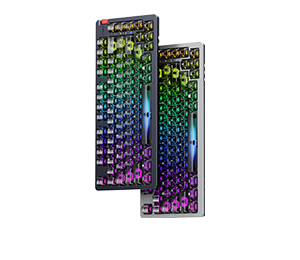Introducing the Flagship Bluetooth DSD DAC& Q5s
Before introducing Q5s, let's look back to the Q5. The old Q5 product planning began in 2015 and was completed in early 2018. After several adjustments, Q5 relies on the absolute advantages of MFi, atpX Bluetooth, and interchangeable amp modules to ensure the popularity and recognition of users. It could still compete with products of the same price so far.

With the development of wireless audio technology and the successful development of the BTR series products, the Bluetooth performance of Q5 is gradually falling behind, so the upgrade plan for Q5 was put on the agenda at the end of 2018.
Therefore, the Q5s is a flagship-level multi-function DAC& that has been upgraded from the original Q5. The new Q5s retain the look of the original Q5, with a powerful digital audio core and a professional analog audio architecture. Using USB, Bluetooth, SPDIF, LINE IN, etc. with computers, mobile phones, players and other devices to achieve extended functions and improve sound quality.
What's been upgraded?
1. Bluetooth chip + Bluetooth codec
Upgraded from CSR8670 to CSR8675 with the addition of aptX HD, LDAC, HWA (LHDC) lossless Bluetooth codec support. Like the BTR3, the Q5s supports seven mainstream Bluetooth codecs on the market, and the wireless audio specification has reached the level of Hi-Res Wireless audio.
2. The indications are clearer and it's easier to use.
The original RGB Bluetooth codec and sample rate recognition function are used on the Q5s. The front hidden RGB strips can indicate 6 different Bluetooth codecs in the Bluetooth decoding state. The sampling rate, Hi-Res sampling rate and DSD format can be indicated in the USB and SPDIF decoding states.

In addition, the four independent LEDs on the side are corresponding to the USB / LINE IN / fiber / coaxial input state. These four LEDs could also indicate battery life and state of charge.
3. More powerful decoding ability and improved audio configuration
Q5s upgraded the clock system, USB channel decoding can support 768k sampling rate and native DSD decoding, the flagship strength is further proved. The DAC is upgraded to the AKM third-generation VELVET class AK4493*2, and the two DAC chips are still independently designed with left and right channels.
4. Not only playability, but also richer interfaces
In recent years, although balanced headphones have become more popular, the interface has never been unified. In order to adapt to more headphone, Q5s still adopts a replaceable module design and comes standard with the new AM3E module. AM3E module has 2.5mm/3.5mm/4.4mm headphone jacks, which can adapt to most balanced headphones.
Second, the difference between DAC& and music player
Portable lossless audio players have become the focus of today's HiFi audio industry, and its increasingly powerful performance and ever-changing features are highly regarded by countless manufacturers. Taking the player of FiiO for example, from M5 of price 99.99USD to M11 of 449.99USD, it has USB decoding and Bluetooth receiving decoding, even DLNA playback and Airplay. Does such a full range of extended decoding capabilities mean that the player will completely devour the market for traditional decoding amps?
At present, it seems that the impact is certain, but the complete replacement has not yet achieved. On the one hand, portable DAC is constantly evolving in the process of development; on the other hand, the two are different in application scenarios, unilateral performance, and scalability.
Take a brief comparison of FiiO M11 and Q5s with similar prices:
1. From the commonly used functions, the player M11 itself is a complete system and used independently mostly; and the decoding amp Q5s is an additional device, the computer/mobile phone/player can be used to make greater use of the original device and has the potential to improve audio quality. Therefore, in terms of supporting interface types, Q5s must be complete, and the input interfaces include USB/Bluetooth/Optical/Coax/AUX.
Secondly, for the same digital input, Q5s is compatible with more devices. For example, USB input, Q5s can be connected to iOS devices (such as ipod touch, iPhone, ipad) to decode and it is MFi certified lossless decoding. If you want to use the SONY playerwith it, it is also possible to use the FiiO-customed cable L27.
Better cpmpatibility and more power docoding. Q5s USB decoding supports up to 768k/32bit and native DSD decoding, and Bluetooth receive decoding supports all codecs.
The product experience used as a decoder is different. The design of Q5s is faster and more convenient, ready to use; with the interchangeable amp module design, it can meet different requirements and adapt to more headphones.
Therefore, for most people who use it and occasionally use it as a DAC to connect to a computer to listen to songs, M11 is good enough; if you want to get a different listening experience, then the Q5s could live up to expectations:
1. If you're used to listening to songs on mobile phone and not satisfied with the sound quality of your mobile phone. The decoder is better than the mobile phone regardless of cable decoding or Bluetooth decoding.
2. If you want to use a compact player (such as the FiiO M5/M6). The Q5s could be used with them for higher sound quality;
3. If you have different headphones such as 3.5mm/2.5mm/4.4mm jacks, the Q5s comes in handy to use with them. In addition, Q5s with K5 can also drive the big headphones.
M11 and Q5s usage and specification comparison
|
Usage |
M11 |
Q5s |
|
USB |
384k/Native DSD |
768K/NativeDSD compatible with UAC1.0 |
|
iOS decoding |
× |
384K/DSD256 |
|
Decoding for SONY player |
× |
384K/DSD256 |
|
Bluetooth decoding |
SBC/LDAC |
SBC/AAC/aptX/aptX LL/aptX HD/LDAC/HWA |
|
Coxial Inport |
× |
192k/32bit |
|
Optical Input |
× |
96k/24bit |
|
Line in |
× |
√ |
|
Replacable AMP module |
× |
All FiiO AMP modules |
Thirdly, how to use the Q5s to get the most out of it.
1. Connect to the iPhone with the included Lightning To Micro USB cable, or use the optional CL06 with an Android phone(FiiO Music App) for lossless and DSD decoding.
*Note: Q5s is MFi certified, so compatibility with iOS devices is guaranteed. However, because there is no unified specification for USB AUDIO in Android system, if you need to use CL06 decoding cable, please contact customer service first.

Using L27 with SONY ZX300A player to achieve lossless and DSD decoding;

Using the L28 with M5 to achieve lossless decoding;

*Note: The optical and coaxial input of Q5s do not support DOP. When using as the example below, please set the spdif output of the player to D2P.
Replacing the standard AM3E with other amp module, and connecting to K5 and computer for native DSD decoding.

LDAC decoding is achieved by connecting to M7 via Bluetooth.

In summary, Q5s is a Bluetooth decoding amp with rich usage scenarios. Whether it is equipped with mobile phones, computers, players, Bluetooth headsets, it can produce excellent decoding power, and you can enjoy music in different ways with Q5s.




